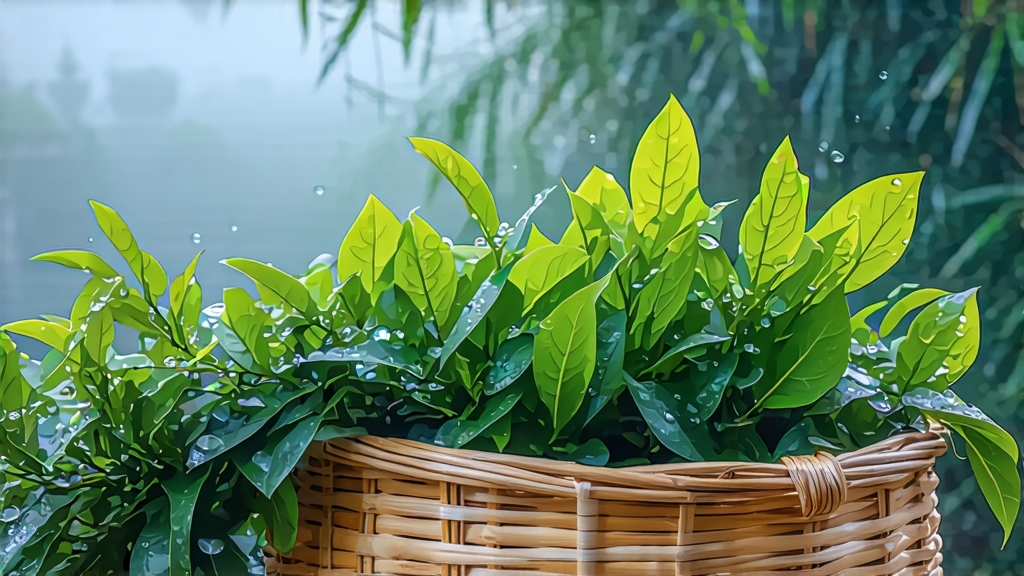
Longjing, literally “Dragon-Well,” is more than a green tea; it is a liquid manuscript of Chinese aesthetics, geography, and etiquette. Nestled among the limestone-veined hills that cup Hangzhou’s West Lake, this cultivar has, for twelve centuries, distilled morning mist into a cup that tastes of dew, chestnut, and the quiet confidence of an empire that once measured wealth in poems rather than coin.
Legend claims that during the Qing dynasty the Qianlong Emperor, while visiting the Hugong Temple at Lion Peak, was so enchanted by the tea bushes that he pocketed a handful of leaves. Later, when his mother fell ill in Beijing, he brewed the souvenir; her swift recovery elevated Longjing to imperial tribute status. Apocryphal or not, the story illustrates how Chinese tea culture intertwines medicine, filial piety, and landscape.
True West Lake Longjing is microscopically small in output: barely 600 hectares of authorized terroir divided into five sub-zones—Lion, Dragon, Cloud, Tiger, and Plum. Within these micro-appellations, the Shi (Lion) Peak is the most coveted; its quartz-rich soil and daily lake-generated fog slow leaf growth, concentrating amino acids that translate into sweetness. The cultivar itself is a regional ecotype of Camellia sinensis var. sinensis, locally called “Longjing #43,” selected in the 1970s for early budding and resistance to spring frost. Older heirloom bushes, “Qunti zhong,” still survive; they sprout later, yield less, but offer a deeper, almost orchid-like complexity that connoisseurs liken to the difference between a Stradivarius and a factory violin.
Harvest begins each year around Qingming, the “Tomb-Sweeping Day” that falls on April 4th or 5th. Only the standard “one bud with one unfolding leaf” is plucked, ideally before 10 a.m. when dew still glistens. A skilled picker can gather just 500 grams of fresh leaf in a day; that shrinks to 100 grams after firing, enough for perhaps twenty cups. Thus every sip represents roughly two dozen hand movements beneath a canopy of apricot blossoms.
The defining choreography is pan-firing in a bare wok heated to 80–100 °C. Artisans, most of them women who inherit the skill from mothers and grandmothers, rhythmically press, shake, and smooth the leaves for fifteen minutes, using only the subtle curvature of their palms. The motion is so precise that calluses form along the life-line of the hand, a biometric certificate of authenticity. First firing “kills green,” arresting oxidation; a cooler second firing shapes the flat, jade sword that Longjing is famous for. When done correctly, the leaf moisture drops to 5 % without ever tasting baked; instead, it retains a grassy luminosity that later steeps into toasted chestnut.
Chemistry backs the poetry. The rapid high-heat denatures polyphenol oxidase, locking in a catechin-to-amino ratio that hovers near 1:1. L-theanine, the same umami compound found in gyokuro shade-grown Japanese teas, reaches 2–3 %, explaining the brothy sweetness that novices often describe as “creamy green.” Volatile aromatics include linalool (lavender nuance) and 3-methylbutanal, the molecule that makes roasted coffee smell like roasted coffee, here present in trace yet memorable quantities.
To brew Longjing respectfully, one needs calm water, not boiling violence. Aim for 80 °C, achievable by pouring kettle water into a fairness pitcher and waiting thirty seconds. Use 3 grams—about a level tablespoon—per 150 ml of glass or porcelain. Chinese tea masters favor a tall, thin glass: it allows the “tea dance” as leaves sink, rise again, and finally hover vertically like miniature green banners. Infuse for 60 seconds; subsequent steeps add ten. A five-gram session can yield four infusions, each revealing a different temperament: first, bright asparagus; second, sweet corn; third, river stone minerality; fourth, a whisper of almond skin.
Tasting is olfactory archaeology. Bring the cup to lip but pause: inhale through the nose while the mouth is still closed, letting retronasal passages detect the “gan,” or returning sweetness, at the back of the throat. Swirl gently; note viscosity. High-grade Longjing will coat the tongue like silk, then disappear, prompting another sip before you have decided to take it